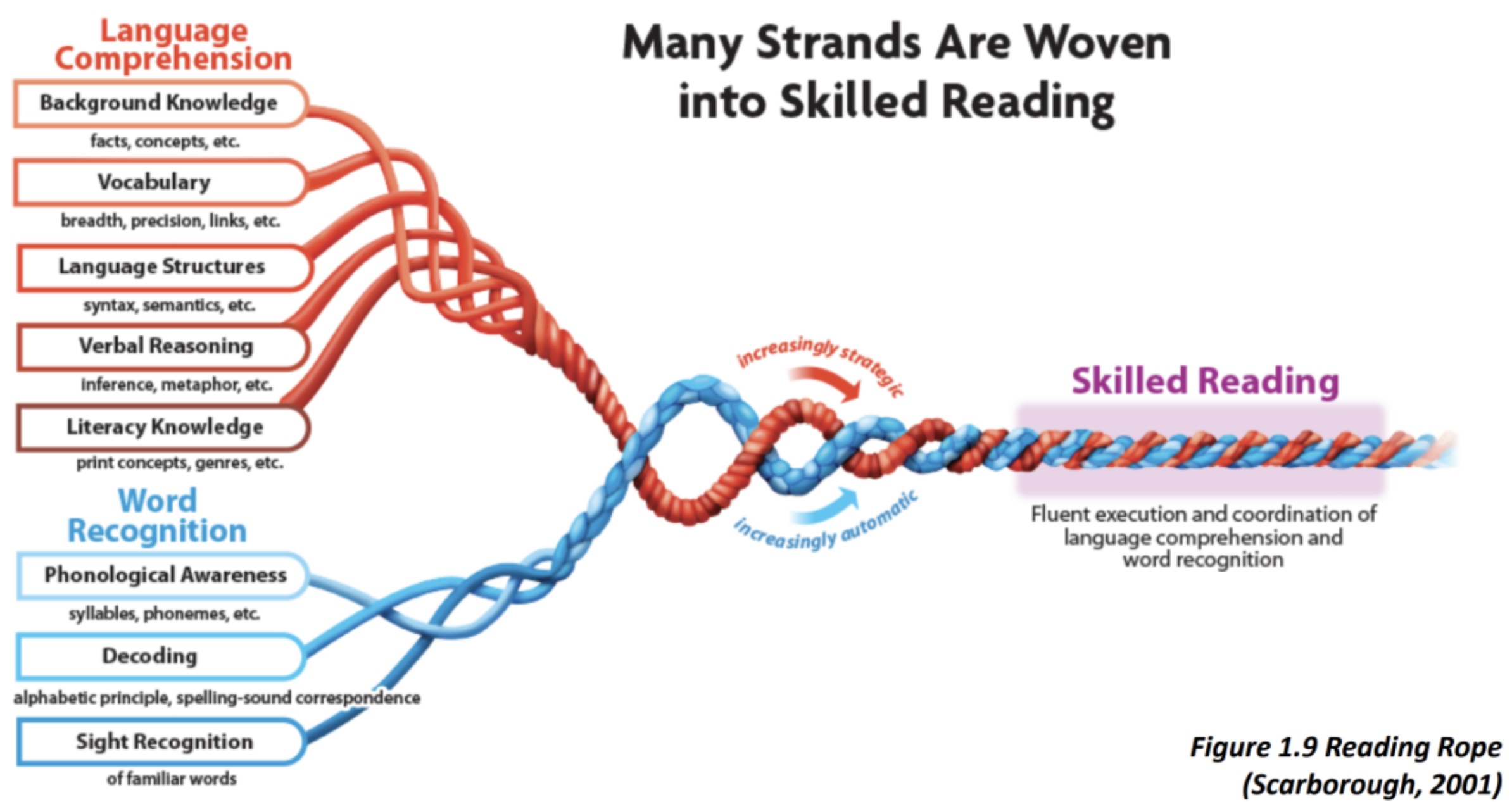In the realm of education, the science of reading research has become a prominent theme. There’s a compelling reason behind this buzz and Read Where You Are resources are informed by science of reading research. But what exactly does that mean, and why is it important?
The term “science of reading” encapsulates an expansive compilation of research that delves into how individuals become skilled readers. It’s not merely a singular study; it’s a culmination of tens of thousands of studies conducted worldwide. Within this vast body of research, a fundamental equation emerges, as articulated by Gough and Tumner in 1986:
RC = LC x D
Now, you might wonder, what is an equation doing in a reading blog? Stay with me for a moment. RC = LC x D communicates and simple but profound truth – the ultimate goal of reading instruction is reading comprehension and the way to reading comprehension is through language comprehension (LC) and decoding (D).
Dr. Hollis Scarborough in 2001 created a helpful visual to show this development. It’s called The Reading Rope, and you will hear me reference it often because I find it to be incredibly impactful in understanding and explaining how to teach children to skillfully read.
Image from International Dyslexia Foundation
.
Scarborough’s Reading Rope reveals that proficiency in reading requires many skills to work together at the same time. As readers begin to master language comprehension skills and decoding skills they are empowered to navigate various texts fluently and with understanding. Conversely, deficiencies in any of these skills can impede reading development.
The science of reading research, particularly Scarborough’s Reading Rope, has many practical implications and in this blog I want to highlight two of them:
1. Reading instruction must include language comprehension skills and decoding skills
From day one of reading instruction, children need a healthy dose of both word recognition instruction and language comprehension instruction. We should evaluate reading curricula based on how comprehensively it teaches both word recognition skills and language comprehension skills (there will be a detailed blog on evaluating curricula soon).
Children need systematic instruction on each component of word recognition – phonological awareness (identifying and manipulating sounds), decoding (letters/sounds/phonics), and sight words (better known as high frequency words). At multiple points in the school year, I highly recommend assessing your child’s word recognition skills. In doing so, you will be able to meet them right where they are in their reading development.
In addition to word recognition instruction, children need to be intentionally exposed to rich texts that build vocabulary, expand knowledge, explore complex language structures, and provoke deep thinking.
This sounds like a lot, because it is! This kind of comprehensive reading instruction doesn’t happen in a day or even a year, but with the right curriculum and resources, it can begin from day one.
2. Being a struggling reader does not have to be a part of anyone’s identity
We know from tens of thousands of studies that with systematic instruction, struggling readers can become skilled readers.
We start this process by first assessing where a child is. Don’t be afraid of assessments! This is not training kids to be test-takers. Quite the opposite, actually. Assessing students helps us identify exactly where they are in their reading development so that we can target their specific needs with individualized, systematic instruction.
Does your child struggle to sound out words? Maybe they have trouble with letter/sound identification. Or, maybe even more fundamentally than that, they actually struggle with hearing and manipulating sounds (phonemic awareness). Assessments help us pinpoint this. If we want to help our students, we must first know our students and their unique needs.
Once we assess students and understand where they are in their reading development, we are then ready to implement interventions to help them become skilled readers.
That was a lot of information! If you have questions about your reading curriculum and how it fits with science of reading research, consider scheduling a consultation with Madeleine to discuss! Please also visit our resource page to get started identifying where you child is in their reading development.
